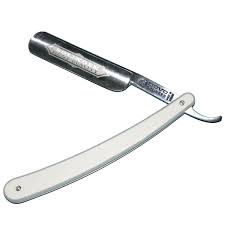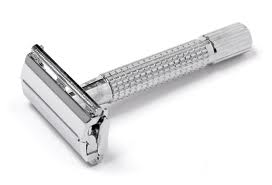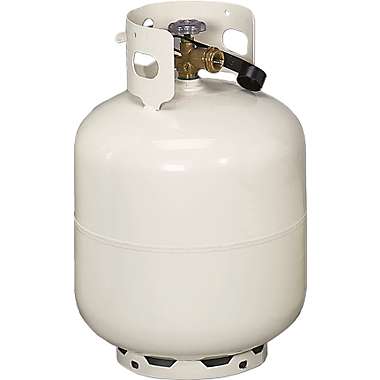
I have no proof of this, but I believe that the majority of people who shave do so either with an electric razor or with disposable blades. I actually use both, which got me thinking about what I would do in a prolonged “stuff hitting the fan” situation where the trucks weren’t bringing disposable razors and the grid was down. While I might be tempted to go Grizzly Adams or Duck Dynasty and just grow a manly mane, the Beautiful Mrs. Ray would oppose. (Yep, absolutely! ~Trudee) In truth, the facial hair wouldn’t bother me but I started shaving my head years ago as a pre-emptive strike against my balding genetics. I happen to like this style better than when I had hair and would still want to shave my head in a prolonged event. But I digress.
I knew about straight razor shaving and discovered safety razors. For full disclosure, I haven’t used either, but I have researched them and thought I would share my thoughts with you.

You’ve probably seen a straight razor used in a movie or on TV. This was the way men shaved for centuries, either by themselves or going to a barber and paying for a hot towel shave. With a straight razor, you will also need a hone to keep it sharp and a strop to keep the metal aligned on the edge.
This is probably the most difficult shave to master and the most dangerous if you’re not careful. It is also the most expensive upfront cost, with razors costing from $100 – $300, strops ranging from $50 – $200 and hones from $50 – $100. Like I said, it’s the most expensive upfront. However, it is my understanding that a well maintained razor will outlast you.

A safety razor has a guide that limits exposure to the blade, thus limiting the risk of a serious cut. Safety razors were the first major leap from straight razors. Safety razors have a disposable one or two sided blade that can be discarded after it dulls. There are a few different types of safety razors that the link can explain far better than I. There is also a variety of blades available, varying in degree of sharpness, among other traits. Some blades will work better for you than others and there are often sample packs offered so you can try a variety at a low price. Safety Razors range in price from $25 – $100, blades range from 5 count packages for $2.00 to 100 count packages for $18.00 – $20.00.
Shaving Brushes
There are a few different types of brushes. From my research, Badger brushes are the best quality. The quality of lather you can get from a good brush and a traditional shaving cream or soap has a much better quality than from modern canned creams.

Soaps and Creams
Aside from the disposable blades for safety razors, creams, soaps and after shave are the only other consumables that would have to be replaced. There are many different creams and soaps. Some are slicker than others and they vary by scent as well. There are two types of shaving soaps; glycerin based and hard soaps. Prices range greatly by size and manufacturer. Glycerin based soaps are cheaper and can last for roughly two months with daily use. Hard soaps are made with heavier oils and can last 4 – 6 months with daily use.
General Thoughts
I hate shaving. I always have. So much so that I usually only shave twice a week. During my research, I read a few accounts from men who hated shaving also. They say that once they began to use a straight or safety razor and found some shaving soaps and creams they liked, they began to actually enjoy it.
As I mentioned, I don’t currently use a straight or safety razor. I would like to use a straight razor but I’m not sure how feasible that is for shaving my head when I can’t easily see the back of it. Because of this, when money permits, I would really like to get a safety razor and start using that full time now.
Stocking soaps and blades to last years is easily affordable, so even if the stuff hits the fan I can maintain a clean shaven appearance.
Resources on Shaving
Here are just some of the links I have on shaving. Some are informational and others offer products.
Shaving 101
The Art of the Straight Razor Shave
Classic Shaving
West Coast Shaving
Badger and Blade
If you liked this article please think about sharing it on the social media listed below, thanks!





